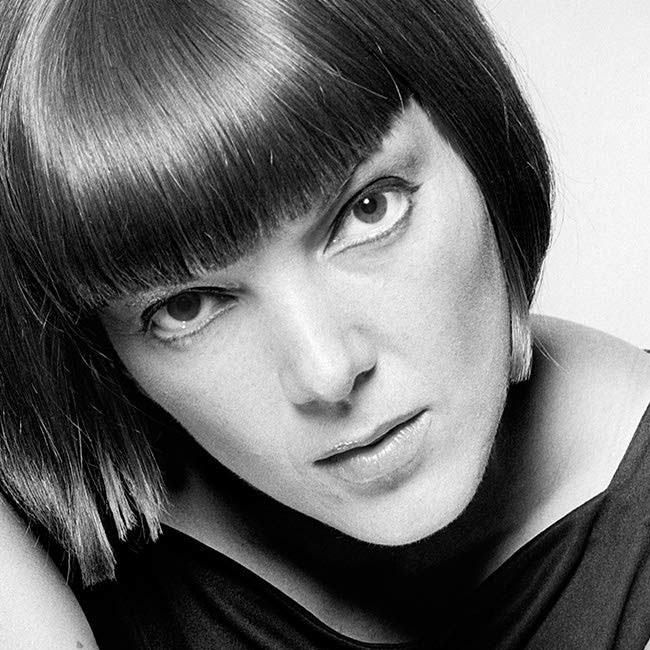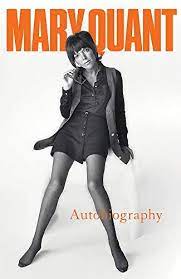Inventor of the mini skirt: Mary Quant
The first fashion designer to present the miniskirt to Buckingham Palace, Mary Quant was born in 1934. She studied teaching at the University of London, Goldsmith College, and her acquaintance with fashion began by adapting paper motifs. Quant's first customers, who sold the clothes she designed in her studio apartment and paid for the fabric the next day, were from the same social circle as him.

Mary Quant's style was Chelsea-style, inspired by children's and dance wear, providing ease of movement. Strapless dresses, gingham pattern, knee-high socks were the main elements that expressed this style. Apart from these, there were innovations brought by Quant, for example, she played with the dimensions of cardigans and transformed football jerseys into dresses. This new style of clothing was described as "dolly birds", which translates as fancy women.
Dame Barbara Mary Quant, Mrs Plunket Greene, DBE, FCSD, RDI (born 11 February 1930) is a British fashion designer and fashion icon. She became an instrumental figure in the 1960s London-based Mod and youth fashion movements. She was one of the designers who took credit for the miniskirt and hotpants.
The most important innovation associated with Quant was the hemline. In 1965, Mary Quant shortened the hem by 10-15 cm and became the fashion designer who designed the iconic mini skirt today.
Mary Quant described the miniskirt at the time: "I was making easy, youthful, simple clothes that you could move around, run and jump in, and we made sure it was the length the client wanted."
Mary Quant was famous not only for her miniskirt, but also for her hair designs and cosmetics. In the 60s, young girls cut their hair like her, wore miniskirt dresses, and made up like her famous model, Twiggy.

Mary Quant (1934)
Born in a rural area of London called Blackheath as the child of teacher parents and moving frequently with her family, Quant discovered her relationship with fashion through her struggle against the boringness of the clothes she received at an early age, and created a unique style by transforming them. She studied illustration at Goldsmiths after her family objected to her studying fashion.
First store: Bazaar
Together with her boyfriend, the aristocrat Alexander Plunkett-Greene, whom she met at university and whom she would later marry, and her friends Archie McNair, they bought a building on King's Road in London's Chelsea neighborhood. Its first boutique, Bazaar, opened its doors in 1955, on the upper floor of the building, where the basement floor was converted into a restaurant called Alexander's. As she describes in her autobiography, Quant by Quant, the ignorant youth learned everything by making lots of mistakes, and although they struggled a lot on the way to success, they survived thanks to their fast-growing reputation. Of course, these successes were not accidental; these three had formed a very good team by combining their different talents. Mary was the design eye of the team, Alexander, known by everyone as “Plunkett”, was talented in public relations and marketing, and Archie, who had left her lawyer and switched to photography, was directing her ventures in the legal and managerial areas.
Quant started to produce her own designs when she couldn't find products for her boutique, which she aimed to fill with clothes appealing to young people. Although she had sewing knowledge from a young age, she had no idea about production since she had no design education. So much so that when she started production, she did not know that she could buy the fabrics in wholesale, so she was shopping at the expensive fabric stores of London at retail prices, almost making a loss! After understanding the easy way, she established a production cycle that progressed day by day; stocks consumed in one day in the store were restocked for the next day, which, although quite tiring, allowed innovative customers to constantly offer new styles.
Young entrepreneurs also owed some of their success to their extensive network in London. The popularity they enjoyed even before starting their own business had quickly made their venue a center of youth culture. Bazaar was not just a store for shopping, it was almost a social place.
Bazaar had unusual showcases of the period
The decor and showcase of the Bazaar also challenged the elegant and mature atmosphere of conventional London clothing shops. Quant, who didn't like the mannequins that stood with one foot in front of the other as if they were preparing to take a tiny step, had their own mannequins made.
She managed to bring these mannequins to life with the help of a sculptor friend who works in a showcase company, which she wanted to pose in animated poses like the mannequins in fashion photographs. Of course, the extraordinary thing about the showcase was not only the poses of the models, they had a lot of fun decorating the window with their friends every Saturday night when they closed the store; the showcase was adorned with unimaginable landscapes for that period. “We once hung a photographer by his feet from the ceiling, with his vintage camera pointing at a mannequin, itself suspended at an incredible angle,” Quant wrote in her bio. “The dress was so unusual that we wanted to give the impression that it was worth getting into any position just to get a good look at it.”
Quant was the first designer to use PVC in clothing
One of Mary Quant's main inspirations was the "Mod" aesthetic. The mod style dominated youth culture in 1950s London; Combining Victorian aesthetics with Rock 'n' Roll, this subculture manifested itself in sharp, clean-lined suits. Another inspiration was the Beatnik street style of a group of artists and intellectual youths who hung out in the Chelsea neighborhood known as the “Chelsea Set”. The unifying factor is the unique design language created by Quant using these elements; was to use unexpected proportions and to bring clothes in front of us in a way other than their usual function. For example, she could redesign pieces that were very similar to Victorian underwear and present them to the customer as daily wear. She made men's cardigans long enough to be worn as dresses, enlivening them with white plastic collars. Taking advantage of the 1960s fashion's love for new materials, she became the first designer to use PVC in clothing.
Quant signature mini skirts
Although it should be taken into account that a design object often does not have a single source, we can say that Mary Quant is the name most often associated with the emergence of the miniskirt. The designer herself describes her relationship with this design as follows: “It was the girls from King's Road who discovered the mini-skirt. I was making easy-to-wear, youthful, simple clothes that could be moved, hop-on, and cut, and we cut them as the customer wanted. I used to wear my skirt pretty short, and customers always asked me to be shorter, shorter.” So even though the mini skirt came out of a collaborative effort between the street style and the designer, it was Mary who gave the name "Mini" to the design. As a result, short skirts were the hallmark of Mary Quant design, no matter who came up with the idea.
Let's not forget to mention his name: André Courrèges (9 March 1923 – 7 January 2016) was a French fashion designer. He was particularly known for his streamlined 1960s designs influenced by modernism and futurism, exploiting modern technology and new fabrics. Courrèges defined the go-go boot and along with Mary Quant, is one of the designers credited with inventing the miniskirt.
Mary Quant as a brand
By the 1960s, Mary Quant had made her way into the worlds of fashion and popular culture, and her influence began to extend beyond London. In 1962, she signed a deal with the American department store JC Penney. In 1963, Mary Quant Limited began distributing a cheaper collection under the name "The Ginger Group". In the 1970s, Quant still had a dominant influence in the fashion world. Since the end of the 1970s, the brand has moved towards expanding its product range that appeals to the lifestyle it represents; She has designed bedding, carpets, paint and wallpaper, swimwear, socks, jewelry, the “Daisy” doll, popular makeup and skin care products for British firm ICI.
